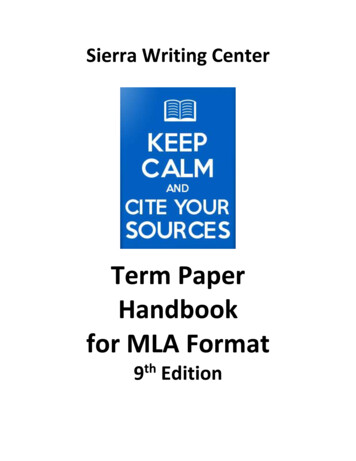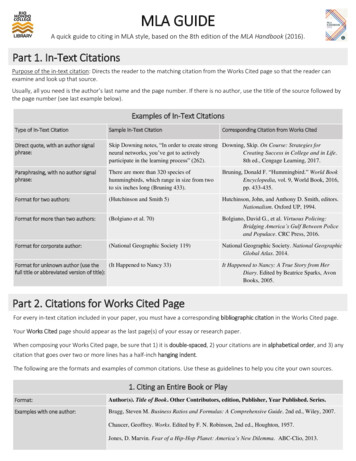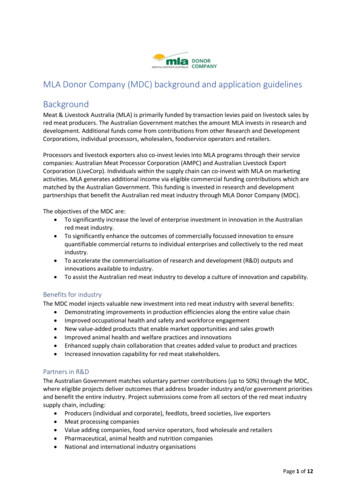
Transcription
MLA Donor Company (MDC) background and application guidelinesBackgroundMeat & Livestock Australia (MLA) is primarily funded by transaction levies paid on livestock sales byred meat producers. The Australian Government matches the amount MLA invests in research anddevelopment. Additional funds come from contributions from other Research and DevelopmentCorporations, individual processors, wholesalers, foodservice operators and retailers.Processors and livestock exporters also co-invest levies into MLA programs through their servicecompanies: Australian Meat Processor Corporation (AMPC) and Australian Livestock ExportCorporation (LiveCorp). Individuals within the supply chain can co-invest with MLA on marketingactivities. MLA generates additional income via eligible commercial funding contributions which arematched by the Australian Government. This funding is invested in research and developmentpartnerships that benefit the Australian red meat industry through MLA Donor Company (MDC).The objectives of the MDC are: To significantly increase the level of enterprise investment in innovation in the Australianred meat industry. To significantly enhance the outcomes of commercially focussed innovation to ensurequantifiable commercial returns to individual enterprises and collectively to the red meatindustry. To accelerate the commercialisation of research and development (R&D) outputs andinnovations available to industry. To assist the Australian red meat industry to develop a culture of innovation and capability.Benefits for industryThe MDC model injects valuable new investment into red meat industry with several benefits: Demonstrating improvements in production efficiencies along the entire value chain Improved occupational health and safety and workforce engagement New value-added products that enable market opportunities and sales growth Improved animal health and welfare practices and innovations Enhanced supply chain collaboration that creates added value to product and practices Increased innovation capability for red meat stakeholders.Partners in R&DThe Australian Government matches voluntary partner contributions (up to 50%) through the MDC,where eligible projects deliver outcomes that address broader industry and/or government prioritiesand benefit the entire industry. Project submissions come from all sectors of the red meat industrysupply chain, including: Producers (individual and corporate), feedlots, breed societies, live exporters Meat processing companies Value adding companies, food service operators, food wholesale and retailers Pharmaceutical, animal health and nutrition companies National and international industry organisationsPage 1 of 12
Companies involved in supporting the industry are also eligible to apply. These include: Packaging and ingredient companies and equipment suppliers Technology development companies, inventors and organisations Plant breeding companies Private consulting organisations, R&D organizations, institutes and agenciesBenefits to technology providers engaging with MDCPartnering with MDC is a cost-effective mechanism for organisations to conduct R&D activities in thered meat value chain which have a defined commercialisation opportunity. The co-funded modelallows the industry to benefit from providers who are best placed to understand technologycapability, opportunity, and risk. The partner can develop commercial opportunities and takeadvantage of technical and commercial networks and contacts. The MDC pathway offers access tokey areas of domain knowledge; trade barriers, export opportunities, food safety, food andpackaging innovations, animal health and welfare, consumer and market drivers, state of the artprocessing techniques.Funding eligibilityMLA is not able to match funds sourced from other Australian Federal Government programs andmay only be able to match funds from Australian State Governments under limited circumstances. Astatutory declaration must be provided clarifying the source of funds.Funding sources may include the following: Australian or International partners (funding directly provided by partner). Levy funds collected by other Research and Development Corporations (e.g. AMPC) Commonwealth (funding provided by the Commonwealth can be used in the project thoughnot matched). State (funding provided by State governments which may be able to be matched undersome conditions).Project eligibilityProjects are assessed of the following key criteria: eligibility for matching R&D funds per the Commonwealth Matching Payments OperationalCompliance & Policy Framework and noting the above section on funding sources alignment with government and industry priorities benefit to industry technical feasibility market and commercial risk capability of research team/partner adoption and commercialisation pathway alignment with available government R&D matching funds through MLA business unit/s.How does the MDC funding mechanism work?The application form becomes the basis of a contract schedule between your organisation and MLA.The contract will set out a schedule of milestones and contribution payments. MLA will issueinvoices to the partner organisation for a minimum of 50% of the cost of the milestone. MLA canonly claim the Commonwealth Government's matching contribution for an investment already in itsbank account. For this reason, MLA first invoices the partner organisation for their contribution,before the partner organisation can invoice MLA for the full (matched) contracted milestoneamount. This will be paid following successful completion of the milestone.Page 2 of 12
MDC Access feeThis program is self-funded and is not supported by industry levy funds. The program can only beoffered if sufficient funding is raised within program to support the management, administrationand delivery of MDC activities. For this reason, a project access fee is applied to all MDC supportedinitiatives.The MDC co-funding access fee is currently 8% or 12% of the net value of the project depending onthe type of investment partner. Industry levy payer partner projects incur an 8% fee for their cofunding access. Other partners pay 12%. The access fee is invoiced quarterly. Extensions to the contracted timeframe will attract additional administration fees(proportionally applied) Increases to the contracted budget amount will attract additional administration fees.Table 1 below shows how project funding is broken down.Table 1: Example of MDC project budgetProject budget12% Access feeTotalMDC project 200,000 24,000 224,000Partner contribution (Cash) * 112,000MDC contribution (government matching) 112,000*in-kind contribution is not counted towards government matching fundsIn this example, the partner contributes 112,000 cash (inclusive of access fee) to undertake a 200,000 project spend for a total MDC contract of 224,000.What isn’t eligible for MDC fundingActivities which cannot be funded by the MDC include, but are not limited to Investments not aligned with MLA’s Strategic Plan Investments not complementary to the current MLA Annual Investment Plan Investments which do not meet the Commonwealth Government's definition of eligiblematching R&D expenditure Generation of intellectual property that creates unreasonable competitive advance at theexpense of industry benefit Conflicts of interest described under Competition and Consumer LawPage 3 of 12
Application guidelinesProject ObjectivesThe objective(s) should focus on outputs or outcomes related to a central research question orhypothesis and should not be confused with completion of work phases or milestones. Eachobjective should be specific, measurable, achievable, realistic and time bound (SMART). You shouldconsider the following: Project Outputs (products) - what this project will deliver or will contribute to, such ascommercial products, traceability programs or web-based extension tools and calculators toname a few.Adoption related outcomes – relates to implications of project learnings/product uptake andimpact to industryExample objectives: Design and deliver prototype(s) and test with 50-60 key stakeholders by 1 May Validate yields to achieve target 90% compliance rate from 100 units by 1 August at 5 sites Cost Benefit Analysis completed including business case recommendations to scale up by 1SeptBackground and SignificanceDefine the problem or opportunity that this project is aiming to address. You should cover thefollowing: How has the project ‘come about’? What currently happens and why does it need changing? What alternatives have been investigated or are available? What happens in otherindustries? Experimentation/investigation work to date and assumptions defined from key stakeholderperspectives (not only you as research provider/partner) for “what jobs are to be done” toaddress the key research question(s) Value proposition and benefit to the red meat industry - describe the value proposition andbenefit of this project to the red meat industry. This description should clearly convey theimportance, relevance and feasibility of the proposed work to red meat producers andbrand owners. Assumptions should describe the “known unknowns” in terms ofproduct/service – market fit (desirability), technical/key activities (feasibility), andcommercial resources (viability). Indicate how these were or will be calculated against abaseline current situation for “size of the prize” pitch.Is the work novelConfirm that the R&D is novel, and that similar work has/is not being conducted by MLA or otherparties. If this is not the case, justify why this project is to be funded. This should be supported by acomprehensive literature review with peer-reviewed publications on the subject matter. Consider ifits new for the world, new to Australia, new to red meat sector.Note any related R&D projects and explain their relationship to this project. If further projects orinvestments are required to deliver outputs (products) required for adoption outcomes and/orimpact, provide a description, time frame and estimated costs for these.Page 4 of 12
Adoption (extension) and commercialisation pathwaysApplications must define potential adoption and commercialisation pathways for the research.Consider: Who your target market is and what the potential barriers/issues/forces to adoption are?Proportion of the target market affected by the issue/problem (what is the opportunity?)What measurement and evaluation processes are planned to assess adoption of the projectoutputs?What year would adoption commence? What is the forecast within the next 5 years?What evaluation processes are planned to assess the adoption rate and impact of theproject outputs?Method to achieve objectivesDescribe the materials, methods, research plan or experimental protocols and design. Consider: What data/insights will be captured throughout the project, how will it be analysed andwhat statistical methods (if relevant) will be used to validate findings? What methodology/ technologies and/or measures will be used? Required approvals to conduct the activity; animal ethics (if needed), food safety permits,maintaining confidentiality etc Where will data be stored and sovereignty during the project and after? List what evidence is required to verify your “desirable-viable-feasible” design assumptionsand/or pivot your approach; what go/no go decision steps are recommended to “fail fast” A proposed timeline of activities corresponding to service provider/s.Include justification for the proposed approach. All MLA funded experimental projects with humanand/or animal subjects must have appropriate approval by animal and/or human ethics committeesbefore any work commences. Suggest this be factored into milestone one of the project if required.Where appropriate, MLA supports a ‘design led approach’ that demonstrates customer centricityvalues and potential prototyping activities – namely what is the problem to solve and jobs to bedone. Defining sets of hypotheses, tests to verify, metrics to measure and criteria to know when it’strue or false in terms of desirability (product/service market fit), technical feasibility, andcommercial viability are fundamental research approaches.MilestonesProject deliverables and budget are split into a series of milestones within the contract schedule.Each milestone should define: The work that will be completed, in terms of measurable achievement criteria relating to thesuccessful delivery of the milestone (e.g. installation of equipment, completion of a 30-day trial,desktop study completed, training course satisfactorily completed). Identify go/no go decisions at project review points throughout the project. These decisionpoints are designed to allow the parties to review a milestone outcome and agree on whether toprogress the project to the next stage (e.g. at the completion of initial feasibility studies) as perthe prescribed resources and scope. Start and finish dates for that milestone. This defines the work to be completed during that timeand expected costs. Service provider who will undertake these activities. If multiple service providers are involved,each should have an appropriate set of milestones. Breakdown of costs for that milestone between salaries, wages, subcontractor fees andexpenses or capital items.Page 5 of 12
Milestones are used by MLA to monitor the progress of the project towards achieving theproject's objectives.All milestone reports must be submitted to MLA two - four weeks prior to the listed contractedmilestone date to ensure adequate time for MLA to review and approve the milestone, whererelevant the partner address any amendments and close out invoicing.Payments are linked to the successful completion of milestones and upon receipt of a tax invoicefor payment.An MLA milestone template should be used, contact your MLA project manager for a copy.Avoid milestone submission dates between 15 May and 30 June if possible due to EOFYimpost.The amount of the final milestone payment on acceptance of a final report should beadequately weighted at 20% or more of the total budget.Some example milestones are set out below.Example 1:Milestones1. Commercial feasibility studycompleted and draft business planavailable for MLA feedback.2. Meat scan and analysis completed.Summary sent to MLA.3.1 Final report submitted to MLA.3.2 Meta-data provided.3.3 Financial reconciliation providedExample 2:Milestones1. Define “where to play” assumptions onwhat the key problem(s) to solve are. Listdesirable – feasible – viable criteria frompreliminary customer/market analysis andvalue chain2. Develop and test Minimum ViableProduct (MVP) prototype. Complete andassess interviews to partially validate“value proposition(s)” and business casefor the prototype.3. Develop a Business Case andRecommendations. Complete Cost BenefitAnalysis (CBA). Use Business ModelCanvas tool to describe key insights andfindings that outline a scale-up plan toadvance the prototype in terms of “whereto play/how to win”. Define value createdand captured for industry from theprototype. If applicable agree to TermSheet to share data with MLA for futuremeasurement and evaluation metricsProviderStartDateCompletionDateXX15 Feb202030 April2020XX30 April20201 Sept 2020YY1 Sept20201 Dec 2020ProviderXXXXYYStartDate15 Sept20201 Dec20201 March2021CompletionDate1 Dec 2020Fees,Salaries& WagesOperatingExpensesCapitalAssetsTotal XX XX 0.00 XX XX XX 0.00 XX XX XX 0.00 XXFees,Salaries& WagesOperatingExpensesCapitalAssetsTotal XX XX 0.00 XX XX XX 0.00 XX XX XX 0.00 XX1 March20211 May 2021Page 6 of 12
Milestonesattributable to outcomes from theresearch project.4.1 Final report submitted to MLA(confidential and public versions).4.2 Paper submitted to and accepted bypeer reviewed journal.4.3 Meta-data provided.4.4 Financial reconciliation providedProviderXXStartDate1 May2021CompletionDateFees,Salaries& WagesOperatingExpensesCapitalAssetsTotal XX XX 0.00 XX15 July2021Final reportA Final Report is required at the end of the project and must follow the MLA style guide – t/project-reporting-templates/ or contact yourMLA project leader for a copy of the final reporting template. Should the project outcome(s) containconfidential information, a confidential and non-confidential (accessible through the MLA website) finalreport must be provided. The duration of the embargo on publication of the confidential version mustbe stated clearly.Budget and JustificationBudget detail and GSTThe project budget is recorded as GST exclusive in AUD unless stated otherwise. MLA will pay GST, inaddition to the budget, on presentation of a tax invoice from the contracted party. The budgetplanning spreadsheets used to calculate costs must be presented. MLA does not have a preferredtemplate for budget planning but welcomes use of GANNT charts outlining resource allocationsagainst key milestone activities. Within your budget planning spreadsheet: provide an explanation of each line item, how this was calculated and how this expenditurerelates to achieving the project outcomes. note the value of and describe how non-MLA contributions (cash and in-kind) support theproposed project. include a breakdown of any institutional overhead charges and their contribution to theproject.MDC assess feesSee above section: How does the MDC funding mechanism work?Personnel (fees)For competitive applications the inclusion of permanent staff salaries into the funding requestedfrom MLA increases the price, decreases the attractiveness of the project and is not encouraged.Where MLA funds for salaries is requested, the funds may include an on-costs loading includingpayroll tax, workers’ compensation, leave loading, long-service leave, non-contributory andcontributory superannuation, excluding items such as extended leave and severance pay. Meaningactual staff costs, not charge out rates could be included.OverheadsOverheads must appear in the in-kind contribution column only and not be combined with salary.The methods used to calculate overheads should be stated and able to stand the scrutiny of anaudit. Consumables might for example include water, electricity, room/pilot plant hire, gas,telephone calls, specific consumables for the project, chemicals, meat and packaging used toprepare samples etc.Page 7 of 12
Expenses related to specific delivery of the MDC project could include: Travel – flights, accommodation, meals, hire of vehicles and mileage expense directly relatedto the project Materials – steel, system controllers, cable, and drive motors, sensors etc. If capital itemsare included, depreciation schedules will be required Include both computer hardware (if under 1,000) and software items in any one year in thiscategory. If relevant; equipment and installation based on the latest prices (excluding GST)obtained from the supplier at the time of submission. Subcontractor costsNote: State usage percentage where these expenses are not 100% for the purpose of the project.For example, an existing staff member is only working on this project for 20% of their time. Or thematerials purchased are used 50% of the time for activities outside of the project. Only thatpercentage of the costs should be charged to the project.Capital AssetsMLA prefers not to fund the purchase of capital items but will consider leasing of equipment as alegitimate expense. Assets considered essential for undertaking the project are treated as adepreciated capital asset and are sold or bought by the project partner at the completion of theproject. The estimated buyback price will be calculated on the Australian Taxation Office (ATO)depreciation rate and time between the milestone linked to the purchase and the completion of theproject. Examples of capital items may include (but are not limited to) machinery, software,websites.Commencing work before contractingMLA requires a signed agreement before any work supporting the described project is undertaken.When proposing milestone dates and start/end dates for the project, be aware that a signed executedagreement may take 12 weeks or more to obtain from initial project application submission. Costsrelated to any work undertaken before project execution cannot be retrospectively reimbursed and isundertaken at the partners risk.Project and Background Intellectual PropertyList Intellectual Property (IP) anticipated to arise from the project, and expected ownership of thisproject IP as a percentage. List any relevant Background IP and its ownership that will be requiredfor the project. Where applicable, an IP register should be reviewed by MLA and the partner atprescribed go no go decision points.CommercialisationIf the objective for the project is for outputs to be licensed (R&D, extension, teaching purposes), soldor otherwise commercially exploited, please provide details on any initial commercial discussions (ifany), the sector/type of commercial partner required and any current obligations over the IP by anycommercial interests. MLA has existing Terms sheets and intent to commercialise documents thatcan be shared during project application development.RisksRisk assessments are important to effectively manage issues that may threaten the delivery of theproject’s anticipated benefits. MLA seeks to identify risk management processes pertaining to eachproject so that the likelihood of achieving outcomes is increased. Risk management processes mayalso establish a reliable basis for planning and decision making. Identifying key risks require anunderstanding of the root cause of the risk and what the impact / consequence of the risk occurringPage 8 of 12
may be. Once these risks have been identified, they should also be assessed for the consequenceand likelihood of occurrence to be able to better evaluate the size of the risk before any mitigationplans are in place (inherent risk). As such, mitigating activities should be formulated to control /manage these risks to an acceptable level. Once mitigation plans have been developed, the risksshould be assessed again for the residual risk.Project proposals should identify the risks that may derail delivery of the outcomes. Risks may beconsidered in several areas such as: Negative reputational exposure – e.g. Non-cooperation from industry and community withsocial research, stakeholder relationships are not managed, work is discredited as beingbiased or too narrow in sampling Ethical issues – e.g. Animal welfare concerns, environmental concerns, modern slaverypractices WHS issues – e.g. injuries on farm or processing plants, during MLA organised tours orevents Legal or regulatory issues – e.g. Legal issues in using particular devices or methods in eachstate, working outside of the boundaries of regulatory areas (i.e. genetic manipulation etc.),conflicts of interest between researcher and potential future commercial partner Privacy or confidentiality breaches – e.g. collection of personal information or commerciallysensitive information are not safely managed, stored or used without consent Intellectual Property (IP) related risks – e.g. Freedom to operate issues stemming frominfringement of IP, unidentified ownership of IP, unmanaged IP interests Technical risks – e.g. Risk of design, technological, scientific or experimental constraints Adoption or extension failure – e.g. Lack of buy-in from producers or processors, lack ofuptake by the industry, value of the project is not understood, limited capability in theindustry to drive adoption or extension services Resource, personnel or facility issues – e.g. Over-reliance on a small pool of resources,limited facilities to conduct research or limited availability of subject matter experts,conflicts of interest between service provider and MLA decision makers Weather constraints – e.g. Research is derailed due to variable weather Food safety – e.g. Breaches to food safety standards, inexpert food handling, foodcontaminants not identified, high levels of radiation exposure Ineffective communications or engagement with industry or community stakeholders /participants – e.g. Limited participation from relevant industry or community groups,potential miscommunication of objectives and outcomes to participant groups, mismanagedstakeholder expectations System or technological failure – e.g. System issues impacting data collection, management,retention and ownership (breach in privacy law) or equipment malfunction and breakdown Financial risks – e.g. Failure to account for fluctuations in foreign exchange rates, delayedmilestones, potential for additional costsSee appendix 1 for more information on risk.Tip: Considerations for risks should not be limited to those listed above. They should be based on yourexpertise on the subject matter.Completed applications and further assistanceCompleted applications with any supporting documentation should be sent to either the relevantMLA technical manager or mdc@mla.com.auPage 9 of 12
Appendix 1: RiskExample risk assessment tableRiskPotential CausesPotential Impactse.g. Privacy breachesPoor management ofcollected data (personalinformation orconfidential businessinformation)Limited number ofsamples utilised forresearch, from a limitedarea.Breach to legislation,including civil penaltiese.g. Research resultsare limited in scope,not representative ofthe population.e.g. Poor animalwelfare allegations.e.g. Food SafetyAnimal ethics or humanethics approval notobtainedNew productdevelopment and processtechnologies withunknown applications tored meat inclusionResults are skewed, canonly be applied to asmall population, or isnot considered credible/ reliable. Resultscannot be used in ameaningful way.Reputation may becompromised; nonadherence to standardsPrototypes developedthat may not addresskey critical controlpoints foodpathogens/spoilagecontrolMitigation PlansConsequenceLikelihoodResidualRiskRatingFood samples prepared in an accredited foodsafety facility with a preliminary HACCP plandeveloped; shelf life lab tests completed onmicrobial, chemical and organoleptic criteriaprior to any food taste testingRisk matrix guideRefer to the consequence and likelihood tables below as a guide to assess and rate risks. Consequence categories are not limited to those in thetable below and should consider relevant consequences to your project.Page 10 of 12
Consequence tableConsequence1Safety, Healthand WelfareReputationAilments not requiringmedical treatment2Minor injury requiringfirst aid treatment31 serious injury causinghospitalisation or multipleminor injuries41 life threatening injury ormultiple serious injuriescausing hospitalisation dueto MLA’s negligence51 death or multiple lifethreatening injuries due toMLA’s negligenceAdverse national /regional media coveragerequiring internalreviewsAdverse national / regionalmedia coverage and / orregulator inquiry and / orloss of members or fundingless than 1%Adverse national / regionalmedia coverage and / orregulator investigation,parliamentary inquiry and /or loss of members orfunding between 1 – 10%Adverse international mediacoverage and / orgovernment investigation and/ or loss greater than 10% ormembers of funding 50,000* 50,001 - 250,000* 250,001 - 2M* 2M - 10M* 10M*Minor disruptions to theachievement ofobjectives; very strongimpact made to theindustry; majority KPIsmetWould require someadjustments to achieveobjectives; strongpositive impact made tothe industry; most KPIsmetWould require significantadjustments to achieveobjectives; average positiveimpact made to theindustry; at least half of theKPIs metWould threaten theachievement of objectives;small positive impact madeto the industry; some KPIsmetWould stop the achievementof objectives; very minimal tono positive impact made tothe industry; little or no KPIsmetAdverse national /regional media coveragewith negligible impact,resolves through routinemanagement processesFinancialOrganisationalObjectives*per occurrencePage 11 of 12
LikelihoodLikelihood scale5AlmostCertainExpected in most circumstances. Has occurred on an annual basis in the past or circumstances are intrain that will cause it to happen.4LikelyHas occurred in the last few years or has occurred recently in other similar organisations orcircumstances have occurred that will cause it to happen in the short term.3Possible2Unlikely1RareHas occurred at least once in our history or is considered to have a 5% chance of occurring in thecurrent planning cycle.Has never occurred in our past but has occurred infrequently in other similar organisations or isconsidered to have around a 1% chance of occurring in the current planning cycle.Exceptional circumstances only. Is possible but has very much less than a 1% chance of occurring inthe current planning cycle.Based on the results of the assessment, inherent risks but also residual risks (once controls assessment and efficiency have been performed) can bereported using a classic representation under the form of a risk consequence and likelihood matrix (see below).Likelihood1Insignificant5Almost mePage 12 of 12
and delivery of MDC activities. For this reason, a project acc ess fee is applied to all MDC supported initiatives. The MDC co-funding access fee is currently 8% or 12% of the net value of the project depending on the type of investment partner . Industry levy payer partner projects incur an 8% fee for their co-funding access.
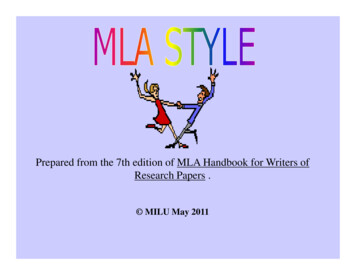
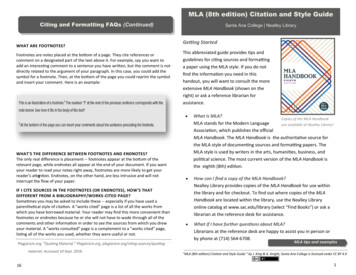
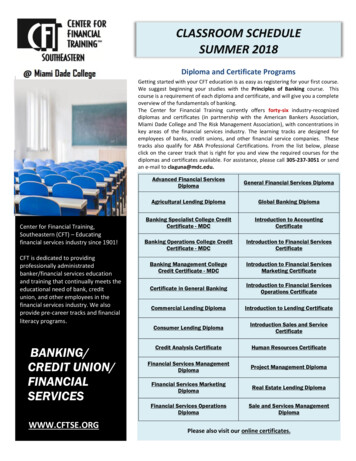
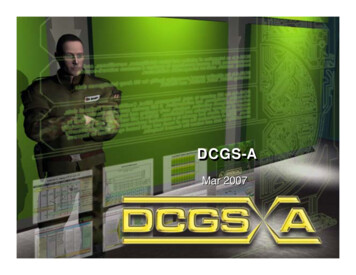
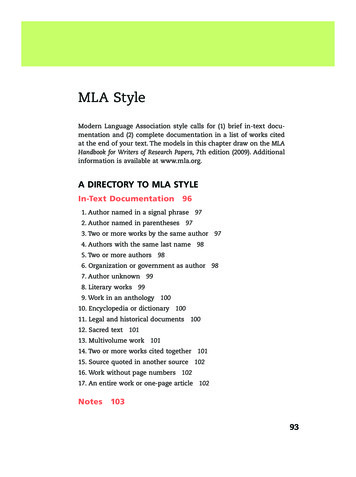

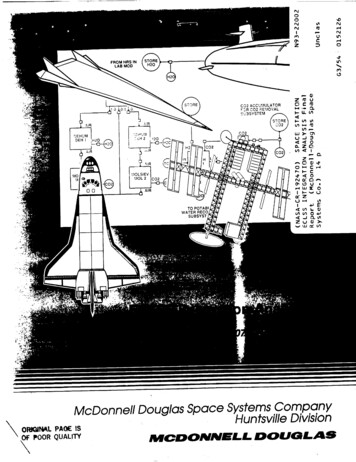

![OPTN Policies Effective as of April 28 2022 [9.9A]](/img/32/optn-policies.jpg)
